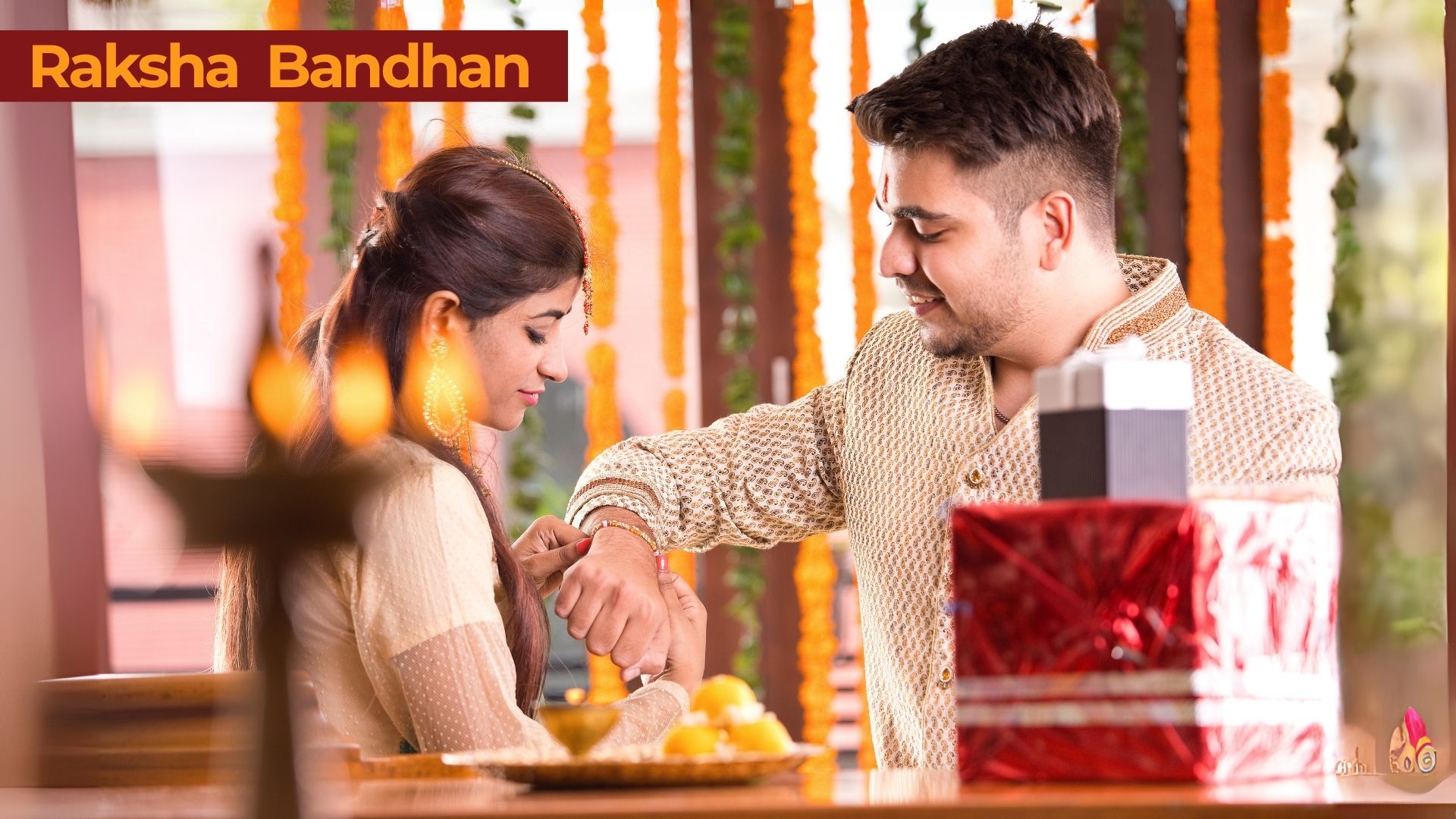Raksha Bandhan, a festival that resonates with warmth and affection, is one of the most cherished and deeply rooted celebrations in Indian culture. This beautiful amalgamation of the Sanskrit words “Raksha” (protection) and “Bandhan” (bond) is a day dedicated to celebrating the unique and unbreakable bond between a brother and a sister. Celebrated on the full moon day of the Hindu month of Shravan, the festival is more than just a ritual; it’s a profound expression of love, duty, and mutual respect.
Table of Contents
The Sacred Thread: A Symbol of Love and Protection
The heart of the Raksha Bandhan celebration lies in the tying of the rakhi. This isn’t just a simple thread; it’s a sacred talisman woven with a sister’s love and her sincerest prayers for her brother’s well-being, health, and prosperity. The act of tying the rakhi around the brother’s wrist is a silent pledge—a promise that the sister will always be there for him, just as he has promised to protect her. The ceremony is a beautiful and emotional affair, filled with rituals that strengthen the bond between siblings.
The sister prepares a thali (platter) with the rakhi, a small lamp for aarti, rice grains (akshat), and sweets. After performing aarti to ward off evil, she applies a tilak (a ceremonial mark) on her brother’s forehead, ties the rakhi, and offers him a sweet. In return, the brother presents her with a gift and, more importantly, renews his vow to be her protector and supporter throughout life’s journey. This exchange of gifts and promises solidifies their bond, transforming a simple thread into an eternal covenant.
A Tapestry of Legends: The Festival’s Mythological Roots
The significance of Raksha Bandhan is deeply interwoven with a rich tapestry of mythological and historical narratives that have shaped its meaning over centuries. These stories are passed down through generations, adding a layer of spiritual and cultural depth to the festival.
One of the most popular legends originates from the epic Mahabharata. Lord Krishna, while slaying the evil King Shishupala, accidentally cut his finger. Seeing the wound, Draupadi, the wife of the Pandavas, immediately tore a piece of her sari and tied it around his finger to stop the bleeding. Moved by her selfless act, Krishna vowed to protect her from all harm. This promise was famously fulfilled years later when he miraculously saved her from public humiliation during her “cheer-haran” (disrobing) by the Kauravas. This story highlights the rakhi as a symbol of a vow of protection, transcending even the boundaries of kinship.
Another ancient tale comes from the Bhavishya Purana, where the goddess Indrani, wife of Lord Indra, tied a sacred thread around her husband’s wrist to protect him during a great war against the demons. The thread, empowered by her prayers, ensured Indra’s victory and safe return. This legend reinforces the rakhi’s power as a divine talisman of protection.
Perhaps one of the most compelling historical accounts involves the Mughal Emperor Humayun and Rani Karnavati of Chittor. When the kingdom of Chittor was under attack, Rani Karnavati, a widowed queen, sent a rakhi to Emperor Humayun, seeking his protection. Despite being of different religions, Humayun was deeply touched by this gesture and recognized the sanctity of the bond the rakhi represented. He immediately mobilized his army to defend her kingdom, honoring the brotherly love he now felt for the queen. This historical event underscores the festival’s ability to bridge divides and foster unity, symbolizing that the bond of love and protection is universal.
The Modern-Day Celebration: Bridging Distances and Hearts
In contemporary times, Raksha Bandhan has evolved while holding on to its core values. It has become a global phenomenon, celebrated not only in India but also by the Indian diaspora worldwide. In an age of fast-paced lives and geographical distances, the festival is a poignant reminder for siblings to reconnect. Brothers and sisters often travel great distances to be together on this day, or if that’s not possible, they send rakhis and gifts through the mail, enabled by technology and global delivery services.
The festival has also expanded beyond the traditional brother-sister dynamic. Today, it is common to see cousins, friends, and even individuals who share a platonic, protective bond celebrating Raksha Bandhan. It has become a symbol of celebrating all relationships built on love, respect, and mutual support. Schools and communities often hold events where students tie rakhis to each other, promoting a sense of camaraderie and universal brotherhood.
The modern celebration also embraces a variety of rakhis, from simple threads to intricate designs and even personalized ones.
As Raksha Bandhan concludes, the rakhi’s sacred thread remains a powerful symbol of the unbreakable bond between siblings, reminding them of their promises of love, protection, and eternal support. With hearts full of joy and spirits lifted, siblings carry the memories of this special day, cherishing the timeless tradition that strengthens their relationship year after year.

